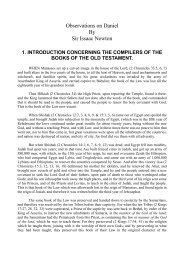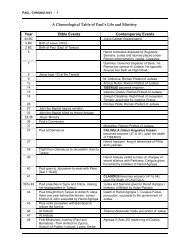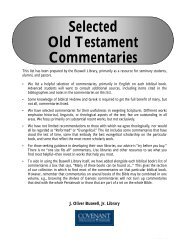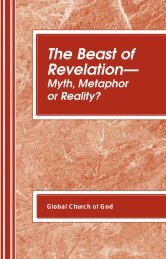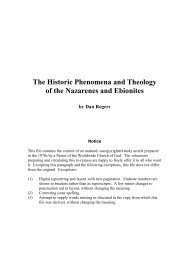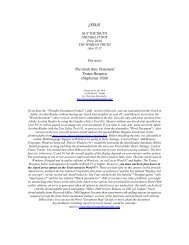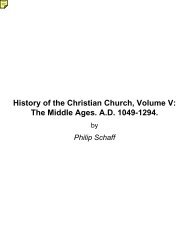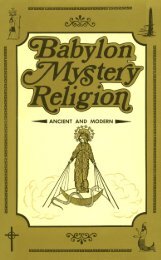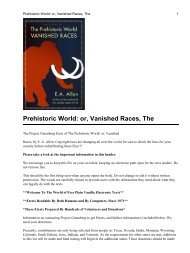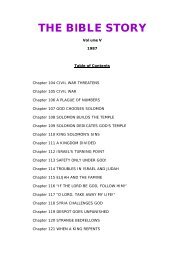Legends of the Shawangunk2 JR.pdf - Friends of the Sabbath ...
Legends of the Shawangunk2 JR.pdf - Friends of the Sabbath ...
Legends of the Shawangunk2 JR.pdf - Friends of the Sabbath ...
You also want an ePaper? Increase the reach of your titles
YUMPU automatically turns print PDFs into web optimized ePapers that Google loves.
156 <strong>Legends</strong> <strong>of</strong> <strong>the</strong> Shawangunk.<br />
management <strong>of</strong> <strong>the</strong> church. They chose Lewis Du Bois, elder, and Hugh Frere, deacon.<br />
Thus was organized <strong>the</strong> Walloon Protestant Church <strong>of</strong> New Paltz, and for fifty years<br />
service was held in <strong>the</strong> French language. But <strong>the</strong> Holland tongue had become <strong>the</strong><br />
vernacular in Ulster and adjacent counties, and gradually became adopted by <strong>the</strong><br />
Huguenot settlers <strong>of</strong> New Paltz. The first Dutch entry in <strong>the</strong> church bears date <strong>of</strong> <strong>the</strong> 6th<br />
<strong>of</strong> July, 1718. During <strong>the</strong> period intervening between 1709 and 1730, <strong>the</strong>re was no stated<br />
supply at New Paltz; <strong>the</strong> earnest Christians were obliged to go to Kingston to attend<br />
preaching—whi<strong>the</strong>r <strong>the</strong>y <strong>of</strong>ten went on pious pilgrimage.<br />
Rev. Stephen Goetschius accepted a call from <strong>the</strong> congregation, at New Paltz and<br />
New Hurley. His ministry healed <strong>the</strong> breach that threatened to disrupt <strong>the</strong> church at New<br />
Paltz. He is described as small in stature, and bent in form. He boarded at <strong>the</strong> home <strong>of</strong><br />
Lewis Du Bois, and married his daughter. He was a sound preacher, and occupied a high<br />
place in <strong>the</strong> estimation <strong>of</strong> his people. His vacant sabbaths were spent at Wawarsing. At<br />
that time <strong>the</strong> Indians were visiting <strong>the</strong> defenseless inhabitants with fire and slaughter.<br />
Goetschius writes <strong>of</strong> preaching in a pulpit cut and disfigured by <strong>the</strong> tomahawks <strong>of</strong> <strong>the</strong><br />
savages; <strong>the</strong> church itself showing evidences <strong>of</strong> having been set on fire by <strong>the</strong> same<br />
agency, but which providentially went out. He fur<strong>the</strong>r writes: “At <strong>the</strong> close <strong>of</strong> <strong>the</strong> war I<br />
perceived <strong>the</strong>re were places where new congregations might be ga<strong>the</strong>red. I did undertake<br />
to collect <strong>the</strong> people toge<strong>the</strong>r, and under <strong>the</strong> blessing <strong>of</strong> God organized nine churches.”<br />
At that time Goetschius was <strong>the</strong> only minister in <strong>the</strong> Dutch church in Ulster.<br />
The log church was soon found to be unequal to <strong>the</strong> demands <strong>of</strong> <strong>the</strong> growing colony.<br />
A new church was built <strong>of</strong> stone, “<strong>of</strong> small dimensions,” <strong>the</strong> records say, “and finished<br />
with brick brought from Holland. Its form was square, each <strong>of</strong> <strong>the</strong> three sides having a<br />
large window, and <strong>the</strong> fourth a door inclosed by a portico. In <strong>the</strong> centre <strong>of</strong> <strong>the</strong> steep and<br />
pointed ro<strong>of</strong> was a little steeple, from which a horn was sounded for religious services.”<br />
This was dedicated December 29, 1720. October 25th, 1771, it was resolved to erect a<br />
third house <strong>of</strong> worship. The site <strong>of</strong> this edifice corresponds nearly with <strong>the</strong> location <strong>of</strong><br />
<strong>the</strong> present church, and is described as having been a “substantial, well proportioned<br />
stone building, with a kipped ro<strong>of</strong>, surmounted with a cupola, and a bell.” The building<br />
was dedicated in 1773. The old square church was broken down, and <strong>the</strong> material used in<br />
<strong>the</strong> construction <strong>of</strong> a school-house, which was afterward converted into a residence. It is<br />
worthy <strong>of</strong> note that both churches were built while <strong>the</strong> people were without a pastor.<br />
It was during <strong>the</strong> ministry <strong>of</strong> Rev. Douw Van Olinda, a gentleman <strong>of</strong> marked<br />
executive ability, that <strong>the</strong> New Paltz academy was erected and put into active operation;<br />
and he was largely instrumental in carrying forward <strong>the</strong> project to a successful<br />
termination. During his pastorate <strong>the</strong> third church was taken down and a new brick<br />
church erected on its site, which constitutes <strong>the</strong> eastern extension <strong>of</strong> <strong>the</strong> present house <strong>of</strong><br />
worship.<br />
There were twelve original proprietors <strong>of</strong> <strong>the</strong> New Paltz patent. These



